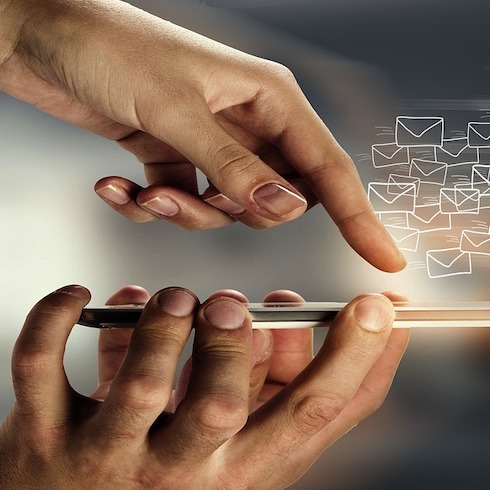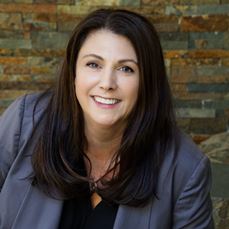Email Still Matters: Five Timeless Email Etiquette Tips
March 22, 2022
E-mail, however, is still the best bet when it comes to communicating with journalists or relaying important information in the workplace. When people try to schedule a meeting or work on the details of a project chances are it is finalized via email. While text or messaging often kick starts a conversation the meat of that conversation – including deadlines and deliverables – is still handled via email.
With that said it’s crucial to remember some of the ground rules of e-mail, particularly when you are communicating with journalists or to large audiences (say, via internal communications in a compoany). Here are the five things you should always do before you click send.
- Check The Name Spelling and Address: Seems easy right? Yet somehow all of us have sent the wrong email to someone or misspelled a name. It’s incredibly embarrassing, especially when the email is sent to a journalist or a colleague. This should be the first thing you do before sending any email: make sure the name is spelled right and the e-mail goes to the right recipient. That great pitch you wrote will crash land if you address Jane as James. If you use software to send pitches or correspondence, take special care to make sure that saving time doesn’t also mean sending e-mails to the wrong person.
- Mind Your Attachments: Attachments are an expected part of an email, especially with pitches. But if you weigh your e-mail down with attachments it will be seen as junk and not read. Consider alternatives to attachments, like a link that takes e-mail recipients to a folder with press releases, images, company materials, and more. It reduces clutter and, should someone want to follow up, makes it easy to find assets.
- Only Copy the Necessary People: E-mails that are sent to a bunch of people are seen as irrelevant or unnecessary. E-mail communication should be pointed, direct, and only include the people that absolutely must see this message. Before you CC someone, make sure they need to receive the e-mail in the first place.
- Don’t Include Long Threads: When people get long threads attached to an e-mail they start hankering for the delete button. Have the courtesy and respect to send them a clean, fresh e-mail that doesn’t include the past 50 e-mails sent to others on the same subject.
- Mind Your Subject Line: A subject line can quickly become a crowded mess that includes the notations FWD and RE: multiple times. Whenever possible, clear out the subject line and start fresh. It increases the chances your email will be read and lets the recipient know it’s not just a junk forward or thoughtless e-mail
Looking to work with world-class communicators who can sharpen all of your written materials and who communicate with style and purpose? Get in touch at hello@wearemgp.com

Senior Director Of Content
Email Still Matters: Five Timeless Email Etiquette Tips
March 22, 2022
E-mail, however, is still the best bet when it comes to communicating with journalists or relaying important information in the workplace. When people try to schedule a meeting or work on the details of a project chances are it is finalized via email. While text or messaging often kick starts a conversation the meat of that conversation – including deadlines and deliverables – is still handled via email.
With that said it’s crucial to remember some of the ground rules of e-mail, particularly when you are communicating with journalists or to large audiences (say, via internal communications in a compoany). Here are the five things you should always do before you click send.
- Check The Name Spelling and Address: Seems easy right? Yet somehow all of us have sent the wrong email to someone or misspelled a name. It’s incredibly embarrassing, especially when the email is sent to a journalist or a colleague. This should be the first thing you do before sending any email: make sure the name is spelled right and the e-mail goes to the right recipient. That great pitch you wrote will crash land if you address Jane as James. If you use software to send pitches or correspondence, take special care to make sure that saving time doesn’t also mean sending e-mails to the wrong person.
- Mind Your Attachments: Attachments are an expected part of an email, especially with pitches. But if you weigh your e-mail down with attachments it will be seen as junk and not read. Consider alternatives to attachments, like a link that takes e-mail recipients to a folder with press releases, images, company materials, and more. It reduces clutter and, should someone want to follow up, makes it easy to find assets.
- Only Copy the Necessary People: E-mails that are sent to a bunch of people are seen as irrelevant or unnecessary. E-mail communication should be pointed, direct, and only include the people that absolutely must see this message. Before you CC someone, make sure they need to receive the e-mail in the first place.
- Don’t Include Long Threads: When people get long threads attached to an e-mail they start hankering for the delete button. Have the courtesy and respect to send them a clean, fresh e-mail that doesn’t include the past 50 e-mails sent to others on the same subject.
- Mind Your Subject Line: A subject line can quickly become a crowded mess that includes the notations FWD and RE: multiple times. Whenever possible, clear out the subject line and start fresh. It increases the chances your email will be read and lets the recipient know it’s not just a junk forward or thoughtless e-mail
Looking to work with world-class communicators who can sharpen all of your written materials and who communicate with style and purpose? Get in touch at hello@wearemgp.com
Today is International Women’s Day. It’s a perfect occasion to remember the extraordinary achievements of women throughout history while highlighting the work needed to achieve true equality for women around the world.
From its inception, MGP has been spearheaded by smart, principled, experienced (and fun) women. We’re grateful for the contributions of all the women who’ve worked or partnered with us through the years. We couldn’t be where we are without you.
International Women’s history has a rich history. The theme this year is #BreakTheBias. This theme is meant to put a spotlight on individual and collective biases against women that perpetuate inequality. Below, some of MGP’s staff share how they’ve fought to break the bias in their lives and careers.
“One of the biggest dangers of bias is a lack of opportunity. Women deserve an equal place at the table and an equal voice in business. I aimed to help women have those voices by giving them opportunities. At MGP women lead from the moment they start working with us. One of my greatest passions is to #BreakTheBias by offering women a chance to make up the forefront of a company and become top-level thinkers and strategists.”
Mindy Hull, CEO and Founder
“Being Asian and female makes me a double minority so it feels like I have even more to overcome. As a society, we must start challenging long-held gender norms and outdated ideas on female and male roles. This is the only way to break the bias and build a more equitable world. There is no quick fix because gender equality is firmly rooted in our society. That said, to make a lasting shift the voices calling for gender equality must be completely diverse so as to challenge the cultural norms in place today.”
Frances Lee, Director of Operations
“Gender stereotypes tend not to mesh with the quintessential idea of a strong leader. I never want my two daughters to think they need to make themselves ‘smaller’ or less assertive and opinionated because they think it’s the only way they’ll achieve success. Women who push boundaries, make waves, and don’t apologize for it should not only be respected, they should be rewarded.”
Allie Gavan, Senior Account Director
“I live in a country that was first in Europe, third in the world, to give women the right to vote in 1907. So as a Finnish female, I feel like gender equality is part of my DNA though we have a lot to do to #BreakTheBias here just like elsewhere. Women need to support each other, network, and bring inspiring role models into the limelight. Whether you are female or male you should have the same opportunity to live, learn and succeed in life.”
Hanna Manninen, Senior PR Consultant
“Breaking the bias means showing young girls and women that they should be who and what they want to be, no matter what other people expect from them. My parents always encouraged me to pursue my dreams and showed me the many possibilities that exist – not just the stereotypical ones that were in my textbooks. This led to me traveling the world on my own, obtaining a degree in artificial intelligence, and chasing my dreams. My wish for this Women’s Day is that all girls will have these opportunities and that together we can all #BreakTheBias.”
Kenza Smit, Account Executive and Social Media Manager

















